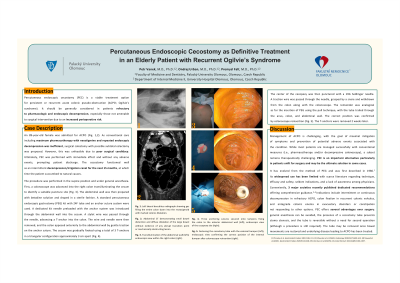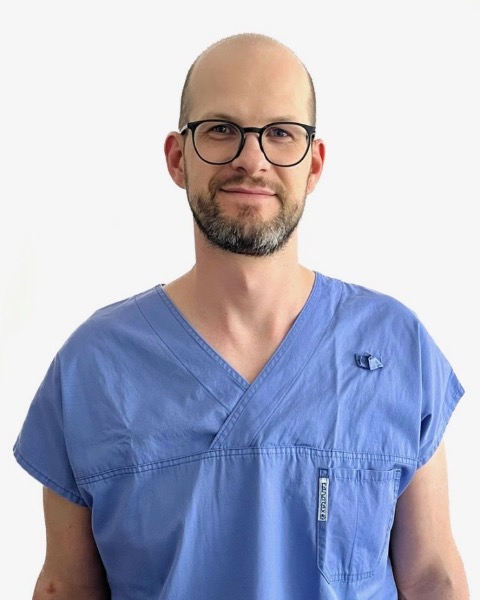Tuesday Poster Session
Category: Endoscopy Video Forum
P3219 - Percutaneous Endoscopic Cecostomy as Definitive Treatment in an Elderly Patient with Recurrent Ogilvie’s Syndrome


Petr Vanek, MD
Palacky University and University Hospital
Olomouc, Olomoucky kraj, Czech Republic
Presenting Author(s)
Petr Vanek, MD, Ondrej Urban, MD, PhD, Premysl Falt, MD, PhD
Palacky University and University Hospital, Olomouc, Olomoucky kraj, Czech Republic
Introduction: Percutaneous endoscopic cecostomy (PEC) is a viable treatment option for persistent or recurrent acute colonic pseudo-obstruction (ACPO; Ogilvie’s syndrome). It should be considered in patients refractory to pharmacologic and endoscopic decompression, especially those not amenable to surgical intervention due to an increased perioperative risk.
Case Description/Methods:
An 89-year-old female was admitted for ACPO. As conventional care including maximum pharmacotherapy with neostigmine and repeated endoscopic decompression was inefficient, surgical colostomy with possible subtotal colectomy was proposed. However, it was unfeasible due to poor surgical candidacy. Ultimately, PEC was performed with immediate effect and without any adverse events, prompting patient discharge. The cecostomy functioned well as an intermittent decompression/irrigation canal for the next 15 months, at which time the patient succumbed to natural causes.
The procedure was performed in the supine position and under general anesthesia. First, a colonoscope was advanced into the right colon transilluminating the cecum to identify a suitable puncture site. The abdominal wall was then prepared with betadine solution and draped in a sterile fashion. A standard percutaneous endoscopic gastrostomy (PEG) kit with 24F tube and an anchor suture system were used. A dedicated kit needle preloaded with the anchor system was introduced through the abdominal wall into the cecum. A stylet wire was passed through the needle, advancing a T-anchor into the colon. The wire and needle were then removed, and the colon apposed to the abdominal wall by gentle traction on the anchor suture. A total of 3 T-anchors were placed in a triangular fashion to fixate the cecum. The center of the cecopexy was then punctured with a 19G Seldinger needle. A traction wire was passed through the needle, grasped by a snare and withdrawn from the colon along with the colonoscope. The remainder was analogical as for the insertion of PEG using the pull technique, with the tube trailed through the anus, colon, and abdominal wall. The correct position was confirmed by colonoscope reinsertion.
Discussion: Management of ACPO is challenging. The effectiveness of pharmacologic and endoscopic therapy has reduced the need for surgery to cases complicated by colonic ischemia, perforation, or colonic dilatation otherwise refractory to nonoperative options. PEC is an important alternative especially in patients unfit for surgery and may be the ultimate solution in some cases.
Disclosures:
Petr Vanek, MD, Ondrej Urban, MD, PhD, Premysl Falt, MD, PhD. P3219 - Percutaneous Endoscopic Cecostomy as Definitive Treatment in an Elderly Patient with Recurrent Ogilvie’s Syndrome, ACG 2023 Annual Scientific Meeting Abstracts. Vancouver, BC, Canada: American College of Gastroenterology.

